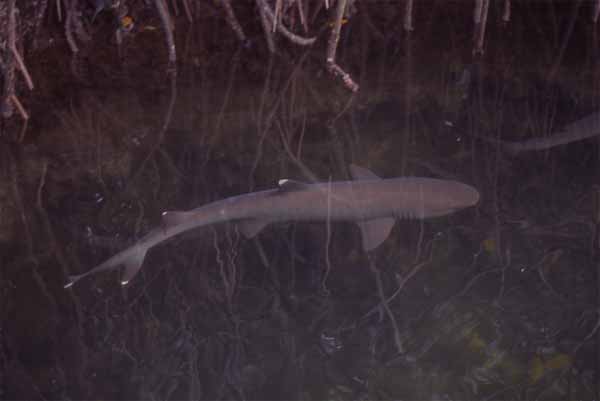SHARKS
Sharks hold a morbid fascination for most of us. Their reputation for being savage killers is a naive view of these wondrous creatures. The sharks of the Galapagos are a pretty tame bunch. Very few attacks have been recorded. A handful of sightings of the great white shark (Carcharodon carcharias) have been reported but it is not a resident species, A couple of attacks (no fatalities) are attributed to this species. The bull shark (Carcharhinus leucas) is rarely seen but is probably the main predator of sealions. Although known to attack humans, such incidents in the Galapagos are not substantiated. The commonest shark species is the white-tipped reef shark (Triaenodon obesus), not considered dangerous. The Galapagos shark (Carcharhinus galapagensis) is endemic, although similar to the less common blacktip shark (C. limbata). In all about eight species of sharks are resident in the islands, including the world's biggest shark, the whale shark (Rhincodon typus). |
Click below to see the photos and information on sharks:
white-tipped reef shark
galapagos shark
WHITE-TIPPED REEF SHARK
Click image to return to gallery
The unthreatening white-tipped reef shark allows you to swim within three or four feet before reacting—then it usually swims off with a flick of the tail. During the day they rest in groups of three to ten, under rock ledges in the reef, on a sandy bottom. At night they leave the caves to hunt along walls for sleeping fish, octopuses and crustaceans lodged in fissure and niches. This was one of a dozen or so swimming in the shallows of Black Turtle Cove, Santa Cruz Island. The lagoon is lined with mangrove forest (note the reflection of branches). |
GALAPAGOS SHARK
Click image to return to gallery
The Galapagos shark is similar to the white-tipped reefshark, except in feeding habits. It feeds on larger fishes, including rays, and other sharks. They are rarely seen. This one was resting by a long dyke stretching out from the eastward side of the Devil's Crown, a few hundred meters from Floreana Island. The other fish swimming around are cortez chubs (Kyphosus elegans). |
Learn about sharks natural history
next photo
|
|---|


